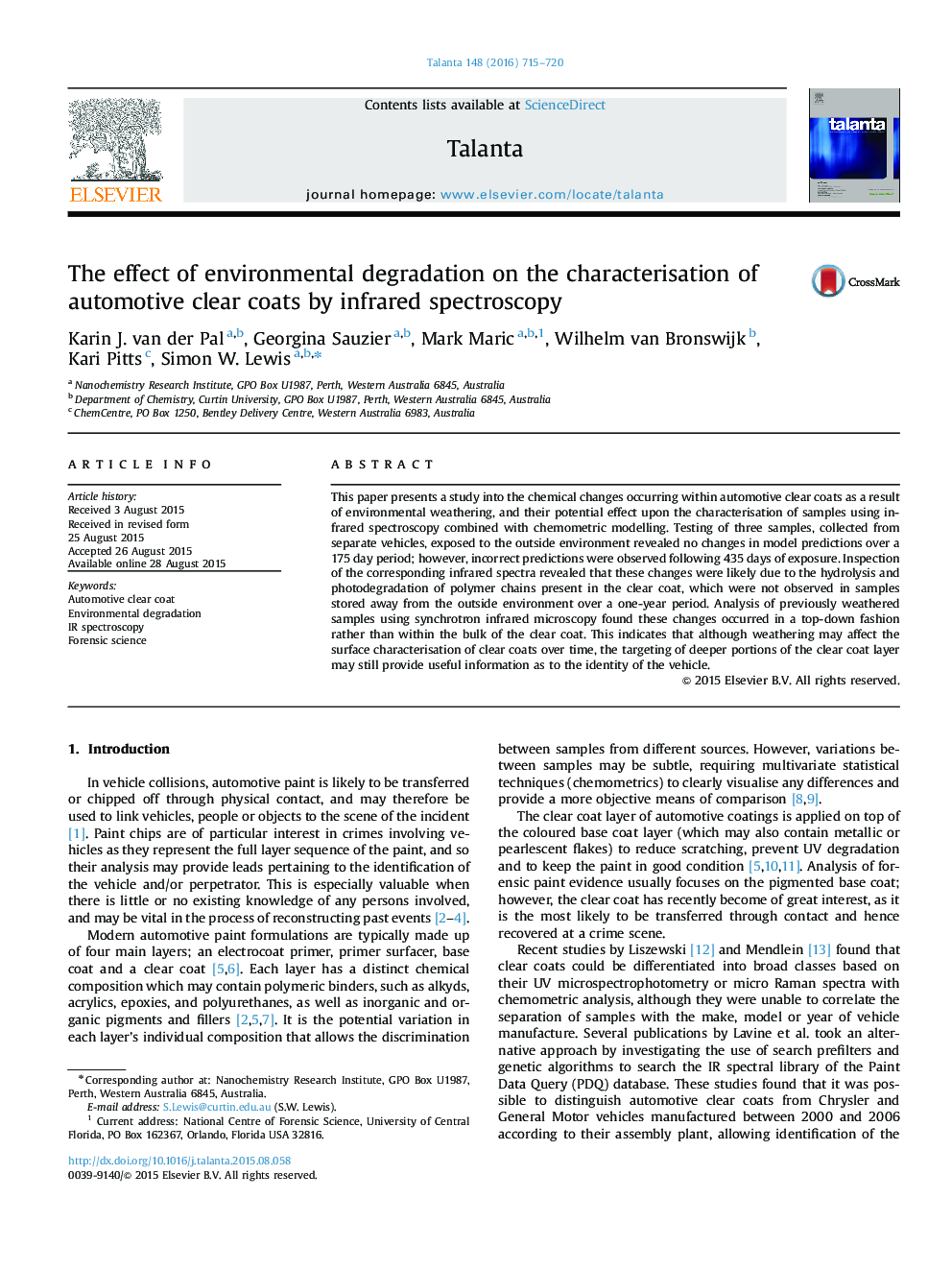| Article ID | Journal | Published Year | Pages | File Type |
|---|---|---|---|---|
| 1243842 | Talanta | 2016 | 6 Pages |
•Chemical changes occur within automotive clear coats exposed to the environment.•These changes impact on characterisation using IR spectroscopy with chemometrics.•Changes are likely due to the hydrolysis and photodegradation of polymer chains.•Synchrotron IR microscopy showed that degradation occurred in a top-down fashion.•Analysis deeper within the clear coat may provide useful information for forensic purposes.
This paper presents a study into the chemical changes occurring within automotive clear coats as a result of environmental weathering, and their potential effect upon the characterisation of samples using infrared spectroscopy combined with chemometric modelling. Testing of three samples, collected from separate vehicles, exposed to the outside environment revealed no changes in model predictions over a 175 day period; however, incorrect predictions were observed following 435 days of exposure. Inspection of the corresponding infrared spectra revealed that these changes were likely due to the hydrolysis and photodegradation of polymer chains present in the clear coat, which were not observed in samples stored away from the outside environment over a one-year period. Analysis of previously weathered samples using synchrotron infrared microscopy found these changes occurred in a top-down fashion rather than within the bulk of the clear coat. This indicates that although weathering may affect the surface characterisation of clear coats over time, the targeting of deeper portions of the clear coat layer may still provide useful information as to the identity of the vehicle.
Graphical abstractFigure optionsDownload full-size imageDownload as PowerPoint slide
